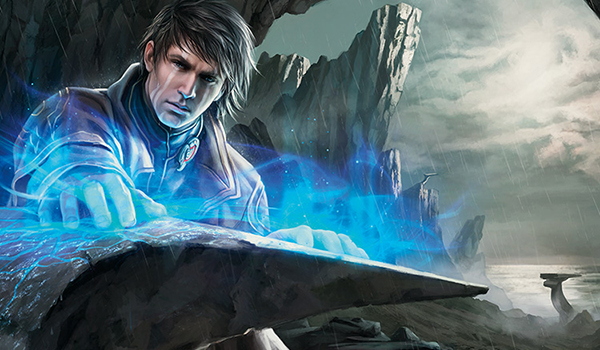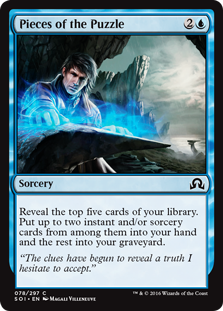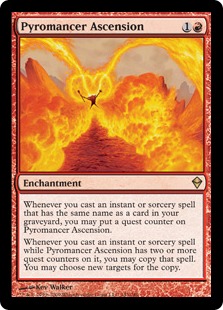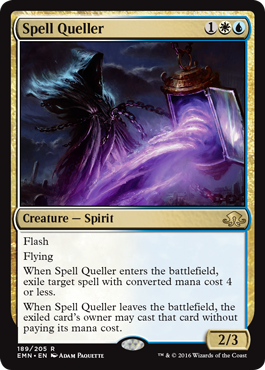Are you a Quiet Speculation member?
If not, now is a perfect time to join up! Our powerful tools, breaking-news analysis, and exclusive Discord channel will make sure you stay up to date and ahead of the curve.
The Star City Games Charlotte Open results are in, and there are numerous other Modern events on the horizon. In a few short months, we’ll have a Modern Pro Tour on our doorstep as well. Summer is over, fall is here, and Modern is back in the spotlight. It is time.

This week, I’ll be taking a look at the latest results from SCG Charlotte, but instead of doing an event analysis as I usually do (David already did something similar earlier this week), I’m going to branch out a bit. Instead I'll be talking about the major players in the format at this point, why they are winning, and what their primary weaknesses are. This article will hopefully serve as a reference in the coming weeks to go back to, as any of these archetypes grabs the spotlight for themselves. Think of it like a primer, but for the metagame as it stands halfway through October. Let’s get to it!
UR Gifts Storm
UR Gifts Storm, by Paul Muller (1st, SCG Charlotte)
It only makes sense to start with the champion, Paul Muller’s UR Gifts Storm. The deck won the SCG Open in Charlotte and put a second copy in the Top 4, as well as placing two copies in the Top 4 of the Modern Classic. Storm isn’t doing anything unique or fresh at this point, but a few new pieces of tech and some metagame shifts have resulted in favorable conditions for Storm to capitalize on.
 Of the four Storm decks to Top 4, only one list (Kazu Negri placing third in the Classic) chose not to play Canoptek Scarab Swarm and Pieces of the Puzzle in some number. You can say he Opted out. Pieces of the Puzzle doesn’t necessarily count as new tech. But as David explained in his article, how we view the metagame and decklist iterations is changing—so waiting to see MTGO technology make its way into paper lists is a good line in the sand to draw.
Of the four Storm decks to Top 4, only one list (Kazu Negri placing third in the Classic) chose not to play Canoptek Scarab Swarm and Pieces of the Puzzle in some number. You can say he Opted out. Pieces of the Puzzle doesn’t necessarily count as new tech. But as David explained in his article, how we view the metagame and decklist iterations is changing—so waiting to see MTGO technology make its way into paper lists is a good line in the sand to draw.
The old Pyromancer Ascension mold of Storm is dead and buried, replaced by value, consistency, and inevitability. This is evidenced by all four of the Storm lists trimming Goblin Electromancer to fit in Canoptek Scarab Swarm, which a few months ago many players might have considered sacrilegious. The real card here is Gifts Ungiven, which keeps the value coming and is more important than the two-mana ramp creatures. In a format where Jeskai Tempo is killing just about everything that hits the table, Gifts Ungiven makes sense, and the archetype is definitely capable of going off without one of their creatures on the table. Don’t scoff at their 17-land manabase—Storm is hitting five mana, oftentimes on curve or just a turn behind. All those cantrips add up, and the traditional waiting game blue decks like to play with Storm doesn’t work anymore.
UR Gifts Storm is winning because it employs a strong, consistent curve that can live through a Thoughtseize, and the format is favorable for it. In the past, Pyromancer Ascension Storm was crushed by Jund Midrange, as they saw their hand ripped apart by Thoughtseize and Liliana of the Veil, and their board demolished by Lightning Bolt and Abrupt Decay.  Now the Jund decks play Death's Shadow and a fair amount of air, and while they hit hard, Storm can take a Thoughtseize to the face and move right along without too much trouble. Most decks in the format aren’t fast enough to consistently beat it before it can go off, in large part because Grixis Death’s Shadow is forcing the rest of the meta to slow down.
Now the Jund decks play Death's Shadow and a fair amount of air, and while they hit hard, Storm can take a Thoughtseize to the face and move right along without too much trouble. Most decks in the format aren’t fast enough to consistently beat it before it can go off, in large part because Grixis Death’s Shadow is forcing the rest of the meta to slow down.
To beat Storm, you can race them, rip apart their hand (quickly), or sidestep them entirely and force them off their game. When they chain, they are doing so on their turn, which plays right into the hands of Ad Nauseam, an archetype just about everyone has forgotten about. You can try racing them with Affinity, but Storm knows its weaknesses and is ready with Shattering Spree and Lightning Bolt. Thoughtseize is a start, but you have to back that up with fast, hard-hitting pressure or more control and discard à la Esper Control. Esper Charm repeatedly to keep them hellbent is a solid strategy, but one they are definitely prepared for, with playsets of Gifts Ungiven and Pieces of the Puzzle to fight on that front.
Jeskai Tempo
Jeskai Tempo, by Jacob Ballington (1st, SCG Charlotte Classic)
The current control deck of the format, Jeskai Tempo is playing all the usual suspects, while also finding room in the maindeck for seven copies of Spell Queller and Geist of Saint Traft. Don’t believe Jeskai is actually a control deck masquerading as aggro? Four Celestial Colonnade, Supreme Verdict, and more counterspells and reactive cards in the board suggest otherwise. The deck plays reactively against just about everyone, killing all creatures that hit the table until they see an opportunity to Spell Queller or Cryptic Command something relevant, and then it's off to the races. If you try to play them like a control deck, they drop Geist of Saint Traft, clear out all the blockers, and punish the format for remaining soft to hexproof creatures.
 In large part, the deck is winning because everyone else is letting them get away with thirteen cards that only kill creatures and/or deal damage, and eleven threats that don’t play great defense. The deck plays incredibly well when it can put its opponent on the back foot, and with most decks in the format concerned with attacking with creatures, that tends to be pretty easy to do. Jeskai lines up incredibly well against Grixis Death’s Shadow, as it can easily burn them out once they've done half themselves. It has plenty of answers to Death’s Shadow’s threats, and Geist of Saint Traft is incredibly difficult for Grixis to answer. Against the field, Jeskai Tempo is consistent while also being proactive and disruptive. It also turns the corner well, as blue mages love to pontificate about.
In large part, the deck is winning because everyone else is letting them get away with thirteen cards that only kill creatures and/or deal damage, and eleven threats that don’t play great defense. The deck plays incredibly well when it can put its opponent on the back foot, and with most decks in the format concerned with attacking with creatures, that tends to be pretty easy to do. Jeskai lines up incredibly well against Grixis Death’s Shadow, as it can easily burn them out once they've done half themselves. It has plenty of answers to Death’s Shadow’s threats, and Geist of Saint Traft is incredibly difficult for Grixis to answer. Against the field, Jeskai Tempo is consistent while also being proactive and disruptive. It also turns the corner well, as blue mages love to pontificate about.
The answers to beat Jeskai Tempo are no big secret; the problem is doing so without dying to the rest of the format. Eldrazi Tron would love to chain Reality Smasher, Matter Reshaper, and Thought-Knot Seer all day with a Cavern of Souls. But that deck is having trouble beating Storm and can’t convert a Day Two performance into a Top 16 finish, judging by the results at Charlotte. The deck wins, but not very quickly, which is an avenue we can pursue as long as we aren’t attacking with creatures. Living End has Spell Queller and Logic Knot to contend with before four mana, which is manageable, and Ad Nauseam can punish Jeskai for playing things like Lightning Helix, Path to Exile, and Electrolyze.
Spell-based combo isn’t for everyone, however, so if you insist on attacking with creatures, make sure they come with value attached. Jund Midrange with Tireless Tracker and/or Kitchen Finks can attempt to grind, but this version of Jeskai forces you to have the Thoughtseize or Liliana of the Veil for their Geist of Saint Traft. Thrun, the Last Troll, of course, flips the script entirely.
Affinity and Death’s Shadow
I’d be remiss to ignore Grixis and Affinity, even though the answers to fight them are well known at this point.
 Affinity wins through sheer speed and power, and the ability to dump their whole hand by the third turn. Grixis Death’s Shadow wins through the ability to grind through all the resources you have and replay the same huge threat multiple times for one mana. Affinity can be beat with artifact hate, removal spells and lifegain. Grixis Death’s Shadow can be beat with graveyard hate, inevitability, and threats that aren’t dealt with through normal means.
Affinity wins through sheer speed and power, and the ability to dump their whole hand by the third turn. Grixis Death’s Shadow wins through the ability to grind through all the resources you have and replay the same huge threat multiple times for one mana. Affinity can be beat with artifact hate, removal spells and lifegain. Grixis Death’s Shadow can be beat with graveyard hate, inevitability, and threats that aren’t dealt with through normal means.
The issue here is that we only have fifteen sideboard slots, and Affinity forces us to find those sideboard cards in our opener, while Death’s Shadow just Thoughtseizes them away. It isn’t enough for our sideboard to shore up a weak matchup; the deck we play has to come from at least a close-to-even position to begin with. Finding an archetype that can do this, while also possessing the power to beat Jeskai Tempo, UR Gifts Storm, Eldrazi Tron, and the random stuff that people play in Modern, is no easy task.
Conclusion
If we are just looking at the results of Charlotte, that would be your metagame, besides Affinity of course. Eldrazi Tron remains a player at the early tables, but only one traditional Eldrazi Tron deck managed a Top 32 finish between both events, and it barely snuck in at 31st.
Grixis Death’s Shadow is still everyone’s target, but past the early tables it seems that a field full of Storm, Jeskai, and Affinity is the one you will face. The top decks have blatant weaknesses, but the puzzle to solve here is how to beat them without losing to the very decks they are capitalizing on themselves.
Thanks for reading,
Trevor Holmes




Eldrazi and Taxes has game against all these decks. 7-8 main board hate slots and RiP in the sideboard for Storm makes it pretty favorable. Affinity is more sketchy, but the deck can run Kataki or Stony Silence in the sideboard, and we have both flyers and colorless blockers if we can make it past the early game. Jeskai Tempo is probably the sketchiest, but we have game if we draw enough gas to grind through their removal. Threats like Dark Confidant and Eldrazi Displacer that take over the game if they don’t go answered, as well as hand hate like TKS and Tidehollow Skuller help in that department. Also, 4 Aether Vials.
I’d say probably the biggest weakness of the deck is it that it sometimes just loses trying to play what’s essentially a 3 color deck without fetches, 10-12 single color (or colorless) lands, and very little in the way of filtering or cantrips.
I’d have to agree with everything you said here. Recently played it in a port and felt very well positioned
Also esper control is great right now.
Although for some reason esper players refuuuuuse to just update the damn deck. But yeah